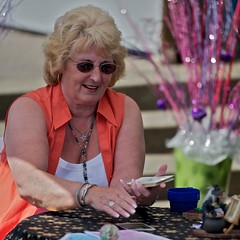Question by Apeyd: Are reversals used in traditional tarot readings? Are they more effective then readings without them?
I have never used reversals when doing tarot readings. I have been curious as to whether they provide a more concise reading and if they have been traditionally used by people in generations past.
Best answer:
Answer by Sexy Granny
Water signs DON’T always depend on their mother.
Give your answer to this question below!

Reverals are important. If a card happens to get turned upside down, it is supposed to be a strong sign.
I like to use reversals, I think they’re especially helpful for someone beginning their path to reading the tarot, they can provide a more clear cut illustration of what the card means under the circumstance, where that meaning can be much more subtle without that visual representation. I.E a Magician is a person who commands a great ability, ill-dignified (as The Hermetic Order of the Golden Dawn loves to put it) or inverted, brings it immediately into the open that in addition to those qualities there is secrecy involved with this magician, dishonesty with himself or others, and that he can become a danger. The reversals are essentially highlighters on what aspect of the card is being emphasized.
Whether you actually allow the card to be dealt upside down is entirely optional, however, the connotations of the reversed card (as well the possibility of harnessing the upright energies of a reversal) remain regardless of the aesthetic choice, and need to be considered by any intelligent reader no matter which way the card is turned. Sharman-Burke and Greene’s Mythic Tarot for instance, which follows a traditional format overall, do no use the technique of reversed cards, “because each card contains within it a dark and light dimension; and this can be determined by the card’s position in the overall spread.” But weigh both the positive and negative potential in every card.
Some readers will not use reversals as they shuffle in a way that the cards cannot become reversed, but if by chance a card does become reversed they take note and read it as reversed. Others don’t care whether the cards are upright or reversed as they will just read them as the upright definition. Still, there are some readers that feel that the Tarot is incomplete if not reading upright and reversed cards. It can give a concise answer when reading with reversals, but it depends on your knowledge of reversals.
I think that they add extra words and meanings to your Tarot dictionary/vocabulary but you need to learn to walk before you can run.
From Mary K Greer’s Complete Book of Tarot Reversals (p18):
“In 1770 Jean-Baptiste Alliette, who went by the pseudonym Etteilla, published the first divinatory card reversals.” (This was not specifically for Tarot, he published these later in 1783.)
Waite also give meanings for reversed cards in The Key to the Tarot published in 1910.
Reversed cards are sometimes called “ill-dignified” versus “dignified”.